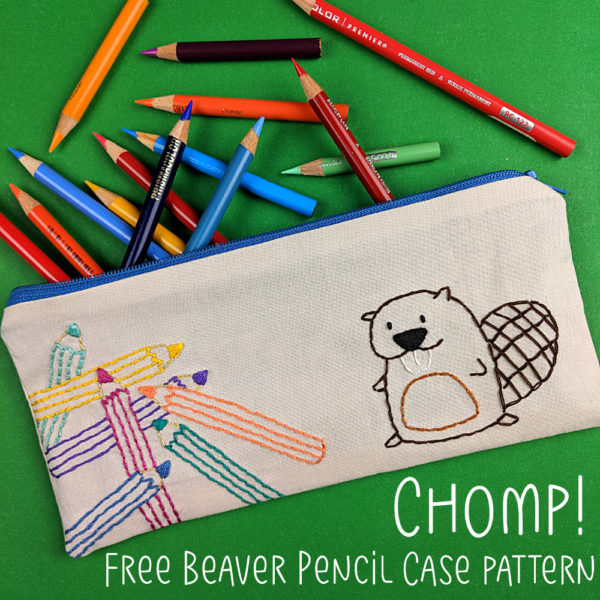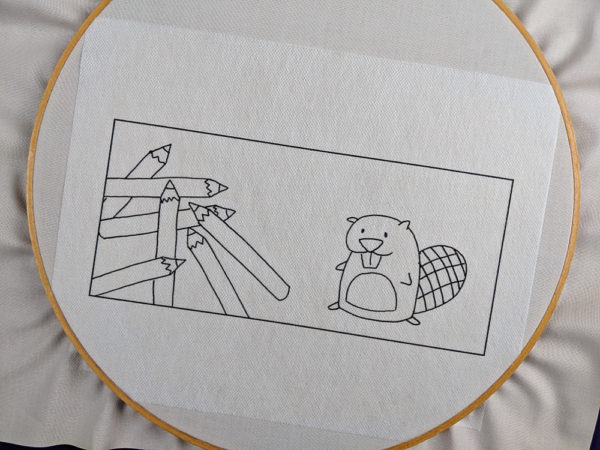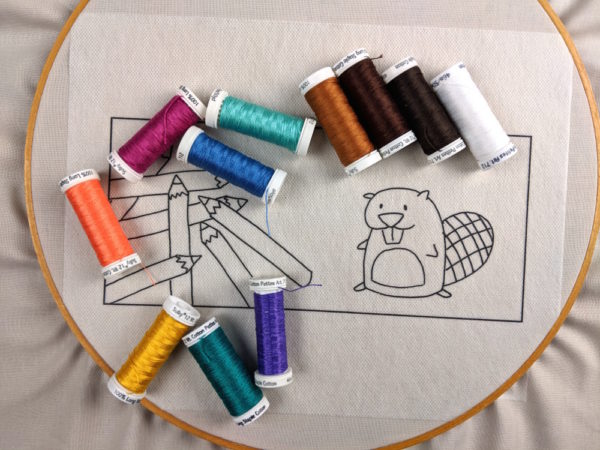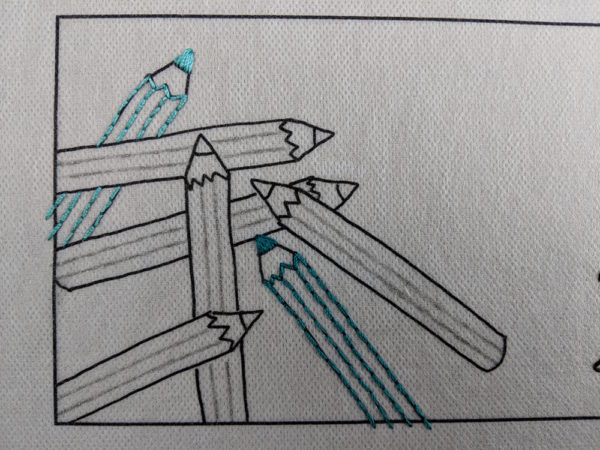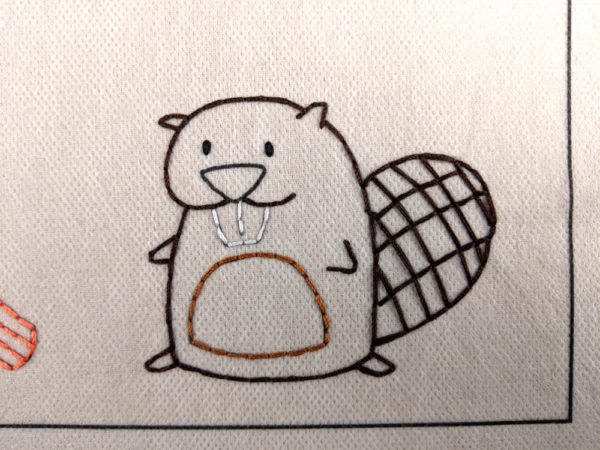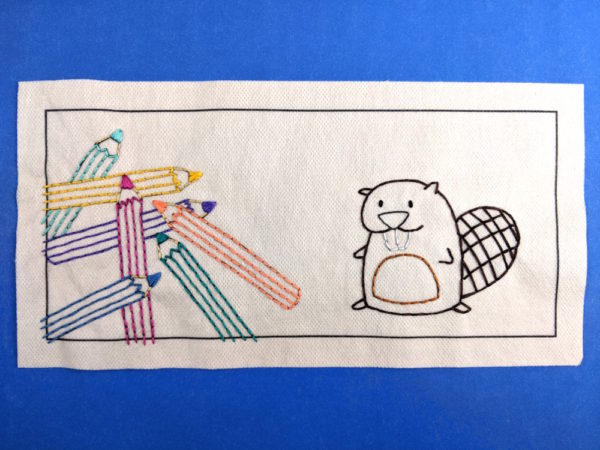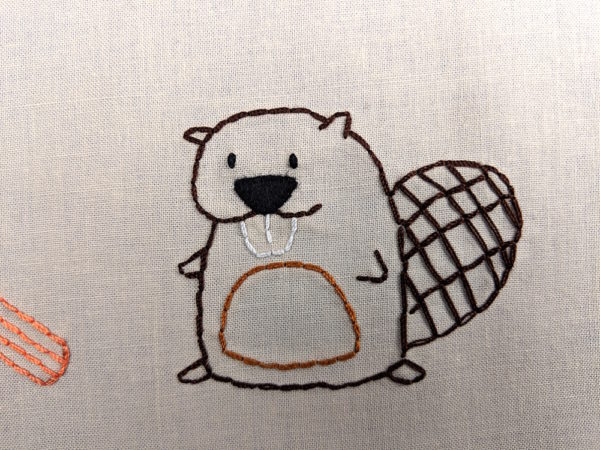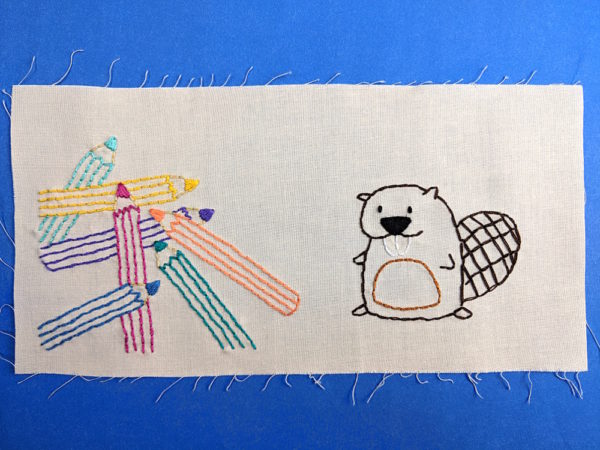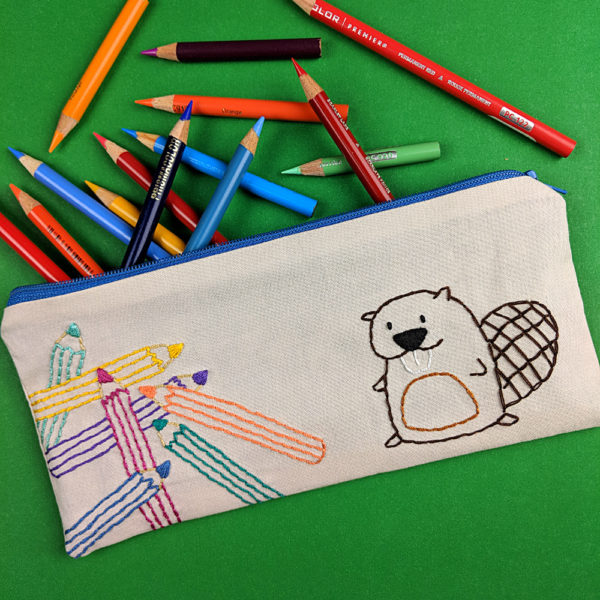Several years ago my mother-in-law made us a fantastic flannel rag quilt. We use it all the time, and every time I look at it I think that it would be super easy to add applique to that style of quilt.
I finally did it!
And it was just as fun and easy as I thought. 🙂
I made mine using the Bunches of Bears quilt pattern, but you could use any quilt pattern you like. All the square quilt blocks in my own patterns are already sized for 10 inch blocks. If you’re using someone else’s pattern you may need to enlarge or reduce the images.
So let’s go!
My quilt is nap sized – 50 x 60 inches – perfect for using on the couch. It’s 5 blocks wide and 6 blocks tall and the blocks all finish at 10 inches.
You can resize the pattern by changing the size of the blocks or by changing the number of blocks. 🙂
I used ten flannel colors (one of each color in the Dash Plaid collection from Dear Stella Fabrics) and bought one yard of each.
I prewashed my flannel. I think people don’t usually do that for rag quilts, but flannel is notorious for shrinking a lot and I didn’t want the shrinking to distort the applique. Don’t use fabric softener in the wash – it can resist the fusible adhesive. Dryer sheets are fine.
Each block is three layers of flannel, so you’ll need to cut 90 blocks, each 11 inches square. You can get nine from one yard of fabric.
Sneaky tip – if you have some ugly flannel that you can’t figure out how it got into your stash, cut 30 of the squares out of that and hide it in the middle of your layers. 🙂
Applique 30 of the squares using any method you like. I used my favorite fusible adhesive method. There’s a video tutorial here. I used Heat & Bond Lite printable fusible adhesive sheets and regular cotton here. You could use flannel for the appliques too if you like, but I wanted to play with the contrasting textures. 🙂
When you position your faces, line up the bottom edge 3/8 inch up from the bottom edge of the block. That way, when you sew the blocks together using 1/2 inch seam allowance, you’ll catch the bottom edge of the applique in the stitching and it will be nice and secure.
Fuse the face into place.
Layer a second square of flannel behind the one with the applique (both facing right side up).
Stitch down all the edges on your applique. Outlining through both layers of flannel adds just a little bit of poof and dimension to your block – not as much as quilting with batting, but similar.
I used the “scribbly” method of going around each bit three times with regular weight black thread and a simple straight stitch. There’s a post here with more detail about that, and one here with more info about using a heavier weight thread if you prefer that.
This post has tips for stitching the tight curves around the eyes, and also for stitching the mouths. And this one has tips for making dark eyes show up on dark faces, like this cutie.
After you get all 30 blocks appliqued, it’s time to sew them together. This was actually the hardest part, because it’s backwards from any other kind of sewing you’ll do normally.
Add a third layer of flannel to each block, this time with the right side facing the back of the quilt. (It’s going to become your quilt back.)
Using 1/2″ seam allowance, sew two blocks wrong sides together so that the seam allowance is on the right side of the quilt.
Here’s what it looks like from the back.
See? That last layer of flannel makes a nice quilt back, and you have a nice clean seam.
I joined all of my blocks into rows of five, then sewed those rows together for the finished quilt.
The intersections can get very bulky, so I snipped into the seam allowance 1/2″ from each edge and sewed my crossing seam through that slit so I wasn’t stitching the seam allowance down.
And look – my seam secures the bottom edge of each bear, just like I planned. 🙂
I found it helpful to use my quarter inch foot, but adjust it out to 1/2 inch for sewing all those layers together.
I also lengthened my stitch to 3.0 and reduced the pressure on my presser foot to keep the layers from creeping. If you can’t make that adjustment on your machine, just use a lot of pins or clips, as if you were sewing napped fabrics together.
Once all the blocks are sewn together, sew all the way around the outside edge of the quilt, one half inch in from the raw edge.
Now it’s time to snip all those seams.
Snip 1/2 inch apart all along all the seam allowances, almost up to the stitching line. Be very careful not to cut into your stitching. If you slip and snip it, repair it now by sewing over the snipped seam.
If you’re trying to snip with regular scissors, you’ll need to take a LOT of breaks. They’re really not designed for this kind of work.
If you can afford to buy a special set of snips just for this kind of work, it is absolutely worth it. I tried several brands and the Fiskars Easy Action Tabletop Rag Quilt Snips were by far my favorite. They have a spring action, so their default setting is open, which saves a surprising amount of strain on your wrist. They’re super sharp, and the blades are slightly serrated, so they really grip the fabric well, helping them cut right up to the tips of the blades without “pushing” the fabric out at all.
Even with the fancy snips I took a break between snipping the horizontal and vertical seams. It took about two hours total.
Don’t forget to snip around the outside edges too.
When you’re done snipping, throw it in the wash and tumble dry.
Ta daa!
All those snipped edges fray in the wash and you get a really soft, fluffy ridge between each block. This blanket is just begging for someone to snuggle under it.
If you make an applique flannel rag quilt, we’d love to see it! Post a photo in the Shiny Happy People group so we can all oooh and aaah. 🙂

Find links to all the posts about pattern size and layouts here.
Quilt Sizes and Supplies Needed
Play with Your Layouts – Multiple Possibilities for One Quilt Pattern
Sashing
- How to Add Sashing to a Quilt
- How to Add Sashing to a Quilt Pattern
- How to Add Sashing to a Quilt As You Go Quilt
- How to Pin Long Seams
- How to Make Wonky Faux Sashing with Quilt As You Go Blocks
How to Make Applique Bust Out of Its Frame
Alternate or Broken Grid layouts (adding half and double blocks)
- How to Make a Quilt with an Alternate Grid
- Quilt Block Sizes for Alternate Grid Layouts
- How to Assemble a Quilt that Uses an Alternate Grid
- How to Quilt a Broken Grid
How to Make an Applique Rag Quilt
How to Make a Wonky Churn Dash Frame for Any Block
Finished with this topic?
Return to the Let’s Make a Quilt main Table of Contents.
Move on to the lessons about choosing your fabric.
Happy stitching!







































